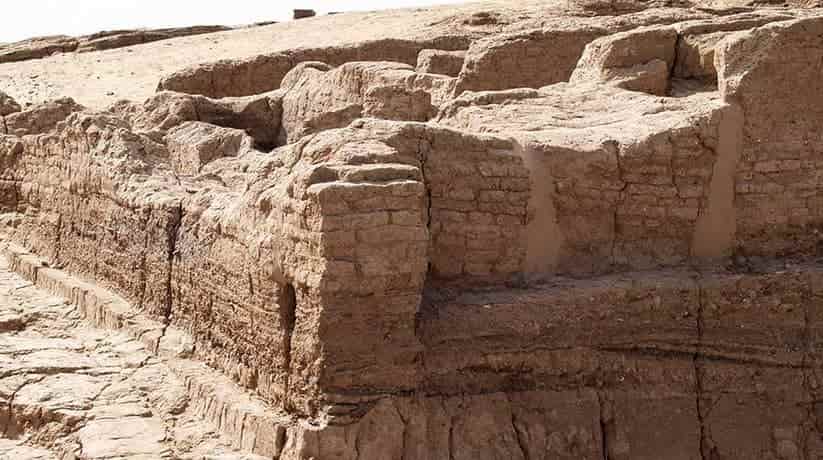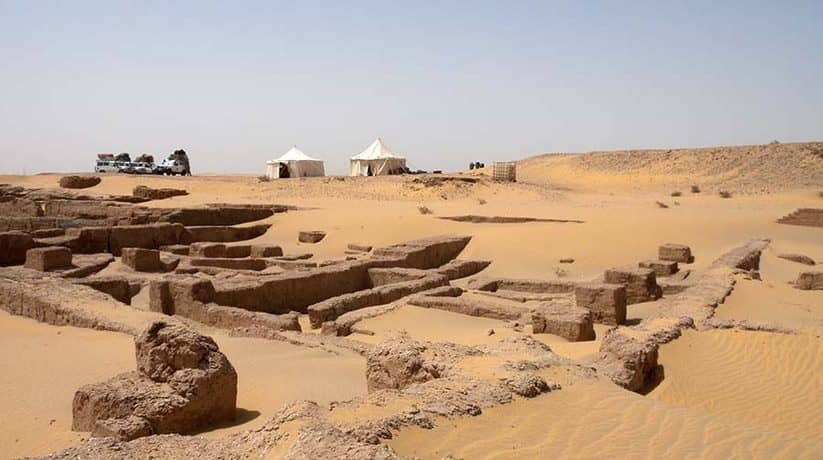Ain Asil Dakhla Oasis Egypt tours, prices, booking, reviews
Ain Asil Dakhla Oasis settlement located about 3 kilometer east of Balat in Dakhal Oasis, Egypt. Moreover, Ain Asil also located 8 kilometer north west of Tineida. In fact, it is at the junction where the ancient Darb el-Tawil joins other routes through the oasis. The site features important remains of a governor’s palace, houses and workshops. The site already investigated by a team from the French Institute of Oriental Archaeology. In fact, the investigation is since 1977. The site at Ain Asil features a small fortified enclosure. Moreover, the site later encompassed a rectangular area of 33 hectares. In fact, the area split into two separate parts. The earliest part is the fortress area which located to the north with a mud-brick settlement. In fact, the settlement extends to the south and east.
The site had an administrative center for Dakhla during the reigns of Pepi I and Pepi II. Most of the town destroyed by a fire at the end of the Old Kingdom and abandoned for a time. Moreover, Ain Asil Dakhla Oasis had a rare discovery of inscribed clay tablets. In fact, the tablets date back to Dynasty VI. This discovery proves that Dakhla Oasis linked to the Nile Valley during this time. Moreover, the tablets contain names of governors of the oasis and their households. In fact, they written in hieratic script. Furthermore, the tablets have lists of distribution of goods. Moreover, the tablets also contain the food supplies to the palace. Furthermore, they also have valuable information which written on papyrus in other areas of Egypt.
Further details about Ain Asil Dakhla Oasis:
The fortress later adapted to other uses. From the fortress, the town sprawls to the south along a main street. Moreover, the town also sprawls to the east. In fact, it is whereas the principal administrative building or palace existed. The administrative building contained a courtyard which was a public audience area. The surrounding apartments rose to a height of 4 meter with walls which painted in yellow ocher. Furthermore, the walls have wooden columns on limestone bases. Off to the sides, two superimposed levels of vaulted magazines uncovered. In fact, they used for the storage of produce because of remains of oil jars which found. Yet, they emptied before the construction of a third level.
In fact, these built under a governor who called Medunefer. He was also the one who constructed a cult chapel there. In fact, his name and titles can seen on the restored doorway to the naos. Moreover, there is also another governor name which found within the palace area. In fact, the name is Khentika. Moreover, the site also encompassed seals which bear the name of Pepi II. Furthermore, Ain Asil also contains the names of at least five generations of governors. In fact, each one erected a small sanctuary for himself. Other excavations of the settlement revealed many large dwellings. In fact, they are much larger than those rare examples found in the Nile Valley. Some of these have remains of staircases which lead up to a roof terrace.
More details about Ain Asil Dakhla Oasis:
Furthermore, Ain Asil site comprises bakeries with ovens, grinding stones and pottery jars. In fact, they were for baking the bread along with ceramic workshops. Moreover, many pottery fragments found in the site. In fact, the fire destroyed much of the early town. Yet part of the fortress-like structure rebuilt during the First Intermediate Period. In fact, it rebuilt to include the enclosure wall and a canal. The destruction by fire allowed archaeologists to gain much information. In fact, the information is about the Old Kingdom structures. Finally, the site abandoned before the Ptolemaic Period. Moreover, no Roman remains found at the site of Ain Asil in Dakhla Oasis.













